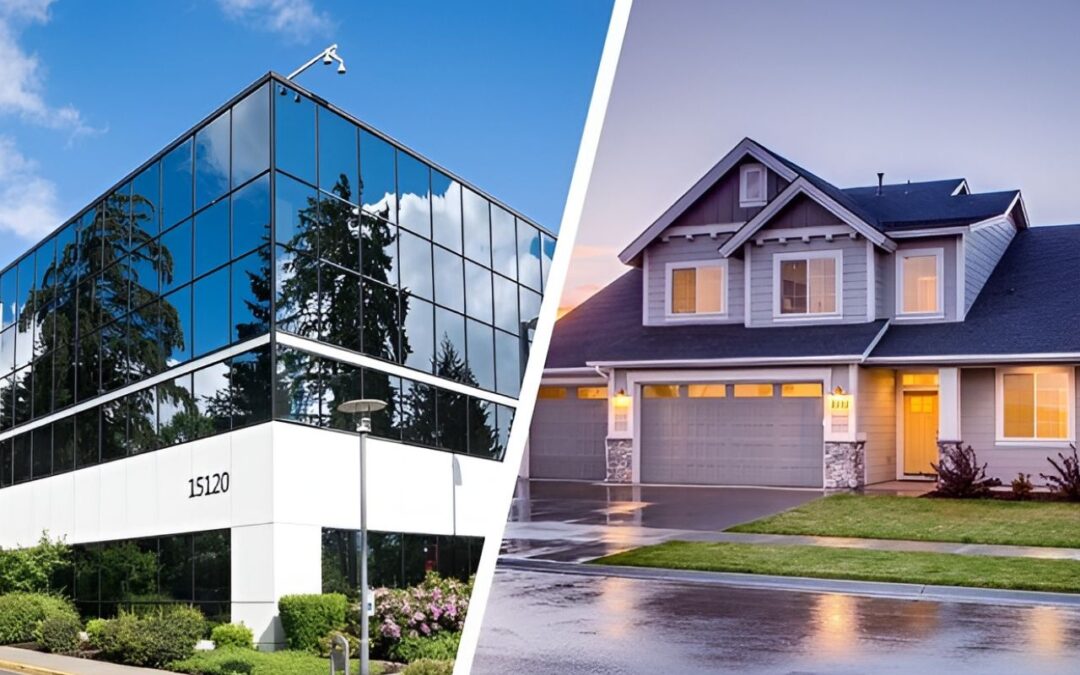Synopsis: Real estate investment is either on residential or commercial sector. However, investors often struggle to decide which one offers the best returns. This article compares residential and commercial real estate across five key features: rental income potential, capital appreciation, risk profile, market sensitivity, and tax implications.
Investing in real estate provides you with long term financial stability. Residential investment provides you a stable income and constant demand whereas Commercial properties offer a long term leasing.
Rental Income Potential
Commercial real estate delivers more rental than residential which gives you between 6% and 12% rental yield, with certain prime locations like Hyderabad, Bengaluru. Office spaces typically offer yields of 7-10% annually, while retail and industrial properties can reach even higher returns. Residential properties give moderate yields. Across India’s major cities, residential yields are around 2% to 5% with the average gross rental yield. While returns are lower, it has consistent demand and essential needs regardless of economic conditions.
Capital Appreciation Trends
Commercial properties have historically delivered stronger appreciation with an average annual growth of 12-15% in specific growth corridors like Bengaluru’s tech hubs and Hyderabad’s pharmaceutical zones, commercial properties are experiencing appreciation rates of 10-15%. Residential properties delivered pretty less than commercial properties, annual gains of 8-9%. Cities like Delhi-NCR saw exceptional spikes of up to 49% appreciation.
For Long-term wealth creation Commercial properties are best, However residential properties offer more predictable and stable appreciation patterns, residential properties are suitable for risk averse investors.
Risk profile and Market Sensitivity
Commercial real estate carries the highest vacancy risk, with typical running from 14-18%. During an economic downturn like COVID-10 pandemic businesses may downsize or close. Residential properties housing demand remains stable because people always need homes, regardless of economic cycles
Also read: Top 5 Areas in Bengaluru with Highest Demand for Branded Residences in 2025
Tax implications and Government Support
Residential properties benefit from various tax incentives including deductions on home loan interest under Section 24(b), principal repayment under Section 80C, and lower stamp duty for women buyers in many states. The GST council decision to reduce cement tax from 28% to 18% and marble/ granite from 12% to 5% which improve affordability.
Commercial properties faces higher GST rates of 18% on leasing, and the Removal of Input
Tax Credit (ITC) for commercial leasing has increased effective costs for investors. However Commercial properties holders can claim depreciation and maintenance expenses, offering some tax optimization opportunities. The RERA has proposed registration bill 2025 aims to digitize property registration, promising reduced ligation and faster transactions for both asset classes.
| Parameter | Residential Real Estate | Commercial Real Estate |
| Rental Yields | 2-5% annually | 6-12% annually |
| Capital Appreciation | 6-10% annually | 12-15% annually |
| Lease Duration | 11-12 months (short-term leases) | 3-10 years(long-term leases) |
| Initial Investment | Lower(₹40-80 lakhs typically) | Higher( ₹5 crore – 10 crores+) |
| Vacancy Risk | Lower (consistent demand) | Higher (Subject to economic cycle) |
| Liquidity | Higher (broader buyer pool, quicker sales) | Lower (limited buyers,longer transactions) |
| Entry Barrier | Low to Moderate | High (capital and lending requirement) |
Conclusion
Both Residential and Commercial Real estate have advantages and disadvantages. If you are a first-time investor, have limited capital, and are low-risk averse, the best choice is to go for Residential real estate. However, if you have a lot of experience, more capital, and want higher returns with risk, then go for Commercial real estate.
Written by Yatheendra N

